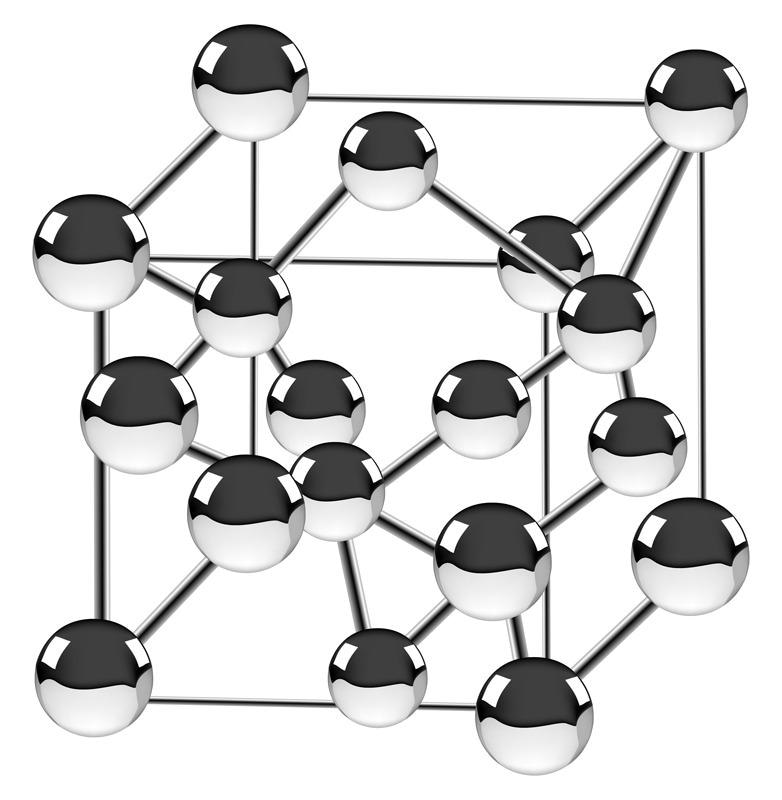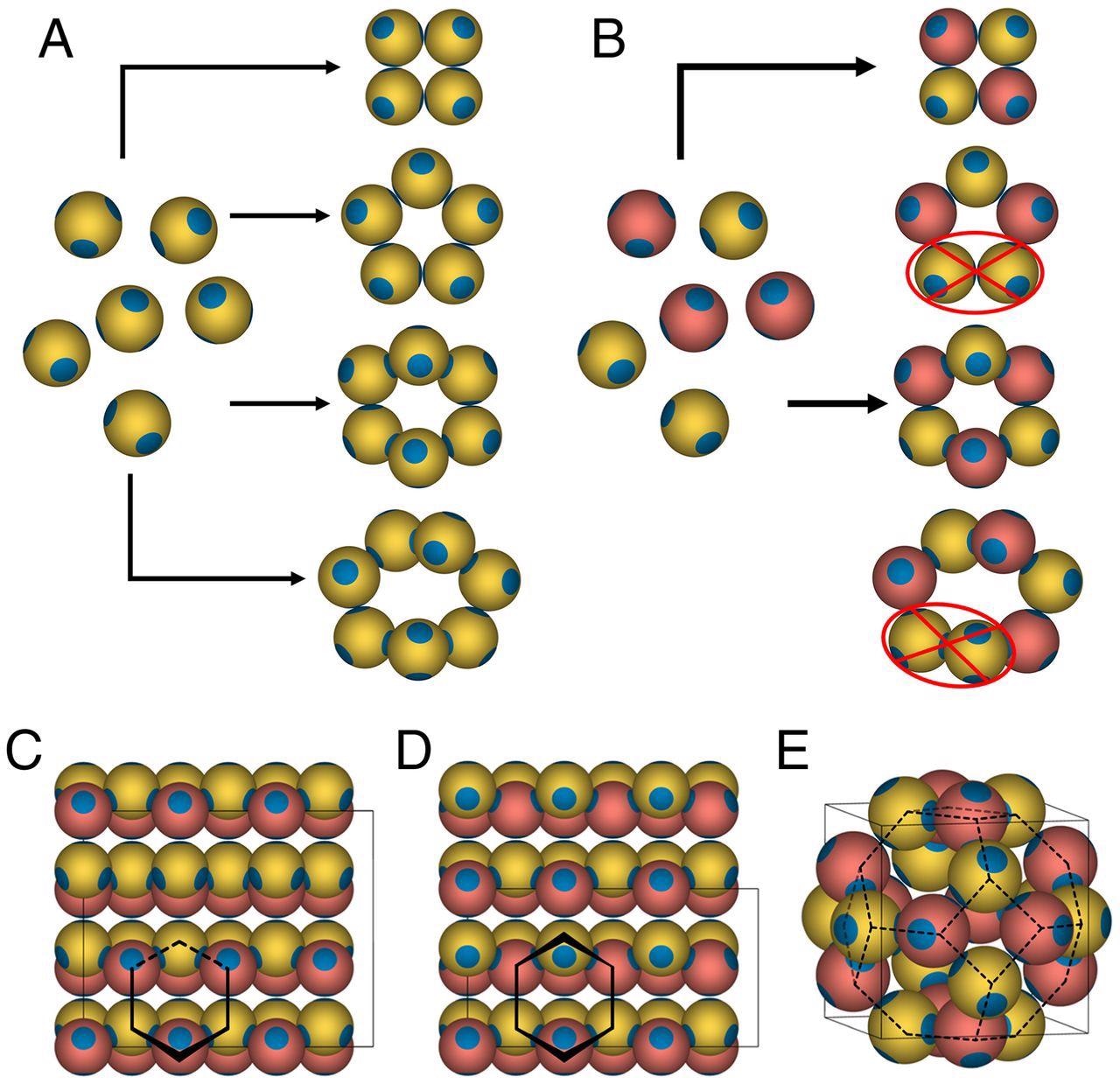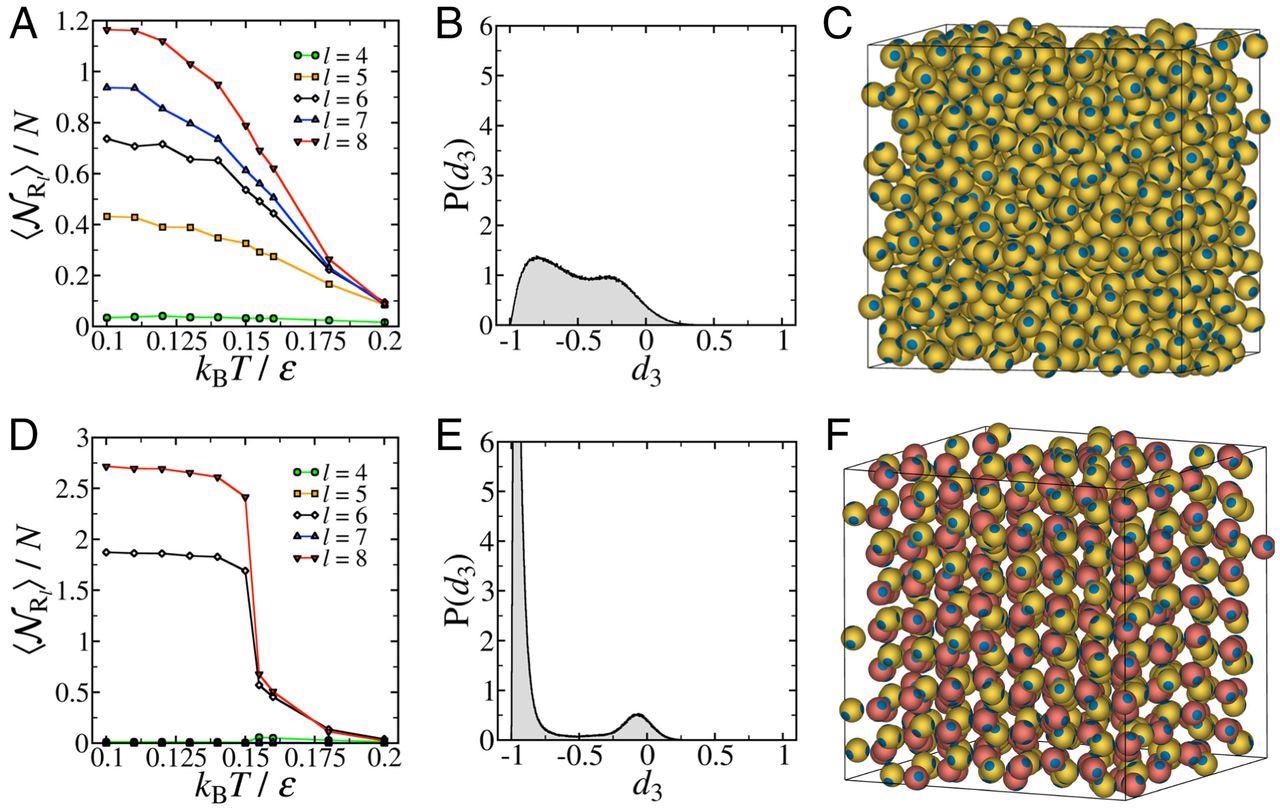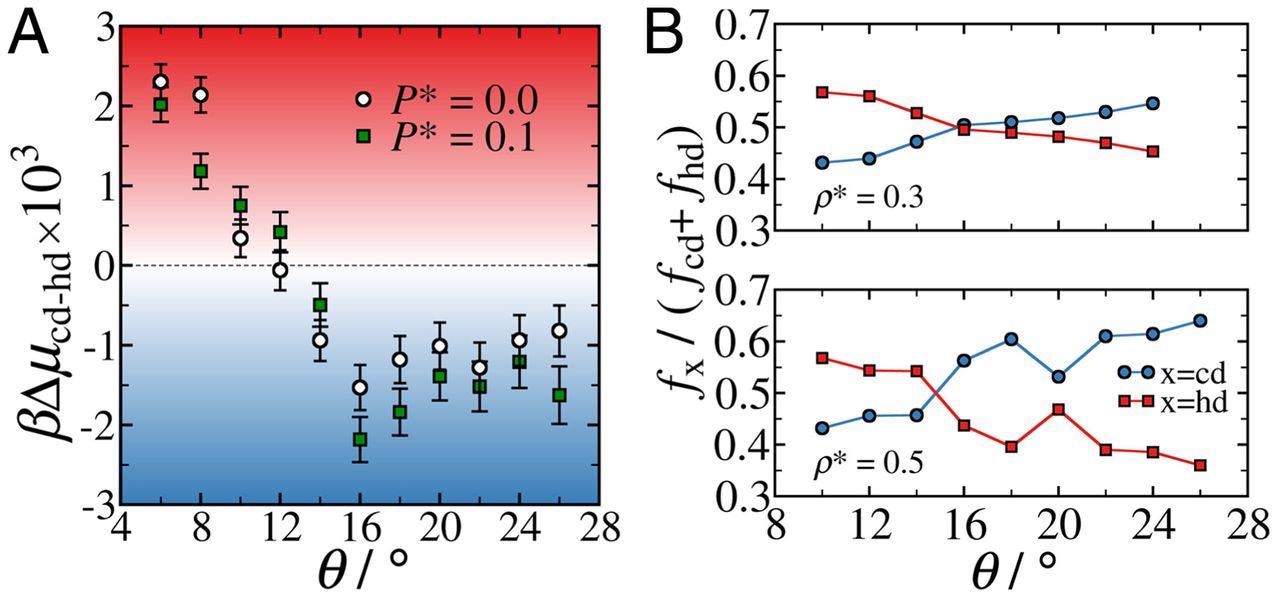Diamond structured-colloidal crystals are attractive for a number of applications due to their unique properties. To explore the fabrication of designer tetrahedral patchy particles which can be used for self-assembly of colloidal diamond structures, a paper has been published in PNAS.

Study: Facile self-assembly of colloidal diamond from tetrahedral patchy particles via ring selection. Image Credit: Potapov Alexander/Shutterstock.com
Fabrication of Diamond-Structured Colloidal Crystals
These crystal structures have been explored in recent years for their applications due to their photonic properties. Research has focused on strategies for the self-assembly of diamond-structured colloidal crystals due to their potential as a bottom-up, scalable process. Studies have shown some success in this field.
One of the forerunners in fabrication routes for the self-assembly of diamond crystals is using spherical particles which have a tetrahedral symmetry due to the presence of four patches. Whilst this method is hugely promising, achieving the self-assembly of diamond crystals from these patchy particles has thus far proven challenging for researchers.
Challenges with Self-Assembly
Challenges in creating self-assembling diamond crystal structures from patchy particles are both kinetic and thermodynamic in nature. This has been suggested by numerous studies that have been performed recently.

Design strategy for the selection of even-member rings in a system of tetrahedral patchy particles using specific interactions. (A) Examples of four-, five-, six-, and seven-member rings that can form in a one-component system of tetrahedral patchy particles. (B) Examples four- and six-member rings that can form in a two-component system of tetrahedral patchy particles, where bonds can form only between distinct species, labeled A (colored yellow) and B (colored pink). Examples of five- and seven-member rings are also shown to highlight that odd-member rings cannot form in such a two-component system of tetrahedral patchy particles, as they require A–A or B–B bonds. (C–E) Example crystal structures that can be stabilized by a two-component system of tetrahedral patchy particles: (C) cubic diamond, (D) hexagonal diamond, and (E) clathrate s-III. The thin black lines represent the edges of the respective unit cells of the crystal structures. We highlight representative six-member rings present in the cubic and hexagonal diamond crystals in the chair and boat conformations, respectively. Additionally, we show the underlying network in the clathrate s-III structure with dashed lines to highlight that the four- and six-member rings in the unit cell are arranged such that they form a truncated octahedron. Image Credit: Neophytou, A et al., PNAS
Clathrate structures can be kinetically favored over crystalline structures when the patches are narrow, forming rings with five members compared to those with six members in their structure. Conversely, spontaneous crystallization from wider patches is difficult due to a lack of thermodynamic forces. In this case, supercooling must be performed for spontaneous crystallization to occur.
When the patches are too wide, crystallization is pre-empted by the formation of a glassy network which is amorphous in nature, and the system undergoes dynamic arrest. In this network, there is an uneven distribution of rings with odd and even numbers, which is not conducive to diamond crystallization, which requires exclusively even-numbered rings. The frustration between the fluid’s local order and the crystal’s global order occurs.
Improving the Process to Induce Spontaneous Self-Assembly of Diamond Crystal Structures
Recently, a two-step synthesis process has emerged as the forerunner in creating self-assembling diamond crystals from patchy particles. The two-step process inhibits the formation of five and seven-member rings, leaving only six-member rings which are conducive to the formation of an open crystal lattice. The frustration between local fluidic order and global crystal order which leads to a dynamic arrest is thus overcome.

Comparison of the self-assembly in one- and two-component systems of tetrahedral patchy particles with wide patches. Self-assembly in (A–C) one-component and (D–F) two-component systems of N = 1000 tetrahedral patchy particles with patch half-angle at ρ∗=Nσ3/V=0.5. (A and D) Evolution of the average number of rings of length l (NRl) with temperature. (B and E) Probability distribution function of the translational order correlation parameter d3 at a temperature of kBT/ε=0.1 . (C and F) Representative snapshots of the configurations in the two systems at a temperature of kBT/ε=0.1. Image Credit: Neophytou, A et al., PNAS
To explore this hypothesis, the team behind the research published online in PNAS used a computational study. The two-step process was investigated in a system containing two designer tetrahedral patchy particles with identical patches in a 1:1 ratio mixture. Specific interactions were introduced by the computational study, meaning that bonds could only form between the two different particle types, which were labeled A and B. The bond-formation specificity was realized by DNA-mediated interactions.
The particle chains could only form closed bond loops where the first and last particles in the chain were of different species. Interspecies bonding constrained the selection of even-membered rings. The two-compartment system can form hexagonal and cubic crystal structures. Furthermore, the two-step process highlighted in the study suppressed the formation of clathrates, but could still stabilize s-III clathrates, which are comprised of four and six-member rings.
The research concluded that the design rules set forth in the computational study do not suffer from competition with the s-III clathrate crystals. This is due to the frustration between four- and planar six-member rings. Kinetic traps in the energy landscape during the process are removed due to the design of the system. Thermodynamic driving forces are enhanced, which is a major feature of the design.
What this Research Means for the Field
By demonstrating a two-step process where interactions are only allowed between patches on different species, the research has presented a reliable method for spontaneous self-assembly of diamond-structured colloidal crystals from patchy particles. It was discovered that there was no competition from clathrate structures, which means that a purer sample of diamond crystals is produced without any dynamic arrest due to frustration between odd- and even-member rings.

Dependence of diamond polytype selection on the patch width in the two-component system of tetrahedral patchy particles. (A) Patch half-angle (θ) dependence of the chemical potential difference (Δμ) between the cubic diamond (cd) and hexagonal diamond (hd) crystal structures of a two-component system of N = 1800 tetrahedral patchy particles at a temperature of kBT/ε=0.1 and pressures of P∗=Pσ3/ε=0.0,0.1. The error bars represent the SE in the values, as determined by block averaging. (B) Relative fractions of particles in a local cubic diamond (fcd ) and hexagonal diamond (fhd ) environment following spontaneous crystal formation in systems of N = 4000 two-component tetrahedral patchy particles with varying θ, at a constant density of ρ∗=Nσ3/V=0.3 and ρ∗=0.5. Each data point corresponds to the average over 25 independent simulations. Note that spontaneous nucleation is observed at different temperatures for different densities and patch half-angles. Image Credit: Neophytou, A et al., PNAS
Understanding the mechanism of diamond crystal self-assembly promotion via ring size selection in relation to colloidal crystals will have implications for the future of the field, facilitating programmable crystal assembly. This will have further implications on processes to improve crystal formation in other materials such as tetrahedral network-forming liquids including silica and understanding the molecular mechanisms at play.
This research will additionally have implications for the design of devices that take advantage of the photonic properties of diamond crystal-structured components, with recent evidence that cubic structures have more superior photonic properties and that randomly stacked diamond crystal structures display complete photonic band gaps.
Further Reading
Neophytou, A et al. (2021) Facile self-assembly of colloidal diamond from tetrahedral patchy particles via ring selection [online] PNAS 118:48 | pnas.org. Available at: https://www.pnas.org/content/118/48/e2109776118
Disclaimer: The views expressed here are those of the author expressed in their private capacity and do not necessarily represent the views of AZoM.com Limited T/A AZoNetwork the owner and operator of this website. This disclaimer forms part of the Terms and conditions of use of this website.